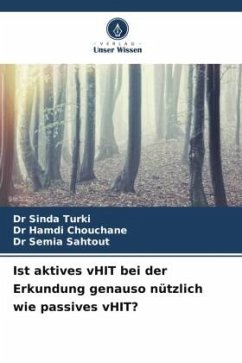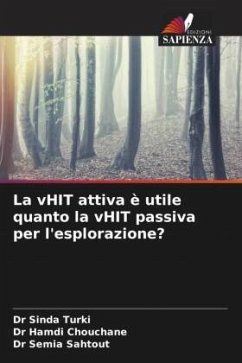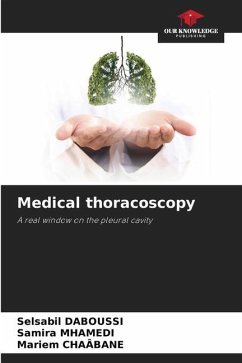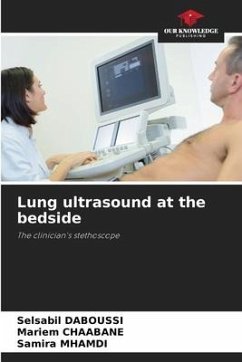
Is active vHIT as useful as passive vHIT in exploration?
Versandkostenfrei!
Versandfertig in 6-10 Tagen
29,99 €
inkl. MwSt.

PAYBACK Punkte
15 °P sammeln!
The video Head Impulse Test provides a simple means of analyzing the function of the six semicircular canals by calculating the VOR gain and describing the saccade phenomena in response to high-speed stimulation. Our aim was to evaluate the results under two different stimulation conditions, active and passive, on 12 patients. Mean gains were equivalent, except for the lateral channels where the gain was significantly higher in active than in passive (0.93 in active vs. 0.84 in passive). Seven patients showed catch-up saccades: 19 overt (passive) vs. 9 (active) and 2 covert (passive) vs. 8 (ac...
The video Head Impulse Test provides a simple means of analyzing the function of the six semicircular canals by calculating the VOR gain and describing the saccade phenomena in response to high-speed stimulation. Our aim was to evaluate the results under two different stimulation conditions, active and passive, on 12 patients. Mean gains were equivalent, except for the lateral channels where the gain was significantly higher in active than in passive (0.93 in active vs. 0.84 in passive). Seven patients showed catch-up saccades: 19 overt (passive) vs. 9 (active) and 2 covert (passive) vs. 8 (active). The latency of covert saccades was shorter in active than in passive. Mean head impulse velocity was higher in active than in passive for all channels except the right lateral. Passive vHIT remains the test of choice for diagnosing canal damage. The improvement in RVO gain associated with the presence of short-latency covert saccades could simulate normal gain and underestimate vestibular damage during active vHIT (rather interesting for assessing the patient's ability to improve gain).












